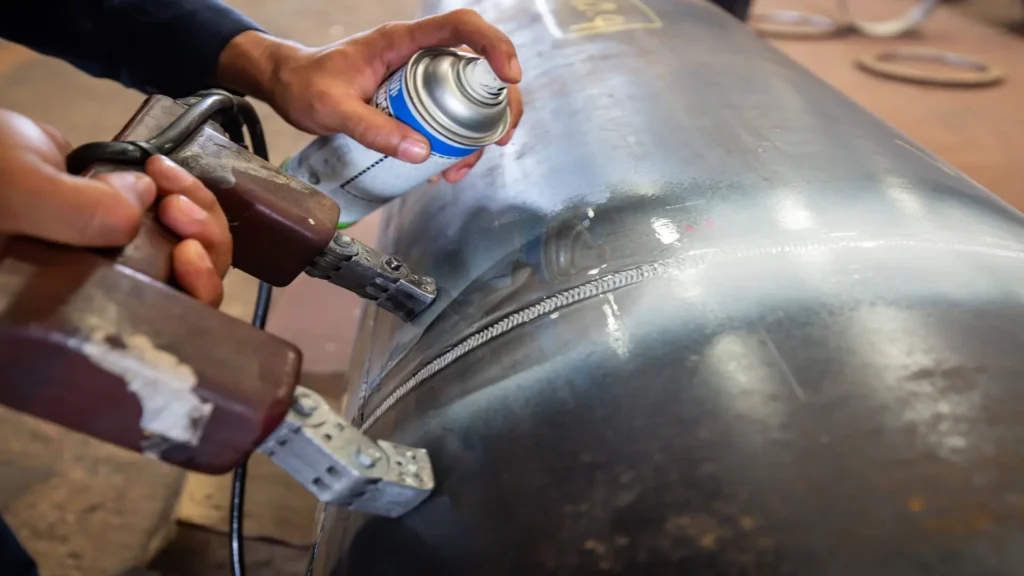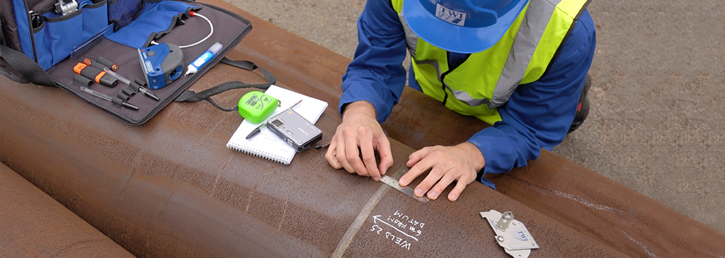Recognizing the Fundamentals of Welding Examination to Make Certain Quality and Safety And Security
In the realm of modern-day design, welding evaluation stands as a keystone for guaranteeing both the high quality and security of structural developments. What are the nuances of these assessment approaches that make them important for keeping structural stability?

Significance of Welding Assessment
In the realm of commercial fabrication, the significance of welding inspection can not be overstated. Welding inspection plays an essential duty in making certain the honesty, security, and longevity of welded frameworks (Welding Inspection Madison).
The process of welding inherently involves intricate variables, consisting of temperature, material residential or commercial properties, and environmental problems, all of which can affect the high quality of the weld. A complete evaluation identifies issues such as fractures, porosity, and insufficient combination, which can compromise the toughness and dependability of the weld. By discovering these issues early, rehabilitative actions can be taken, thereby lowering the risk of failing and connected prices.
Additionally, welding assessment adds to governing compliance, as several industries are controlled by strict safety and security standards and standards. Failure to comply with these regulations can lead to economic penalties and lawful liabilities. Inevitably, welding inspection not only safeguards physical frameworks however additionally promotes and safeguards human lives market reputations.

Secret Welding Examination Approaches
Although welding assessment is important to making sure the high quality and safety of welded frameworks, it is the specific methods employed that figure out the performance of the examination process. Secret welding assessment methods can be extensively categorized into non-destructive testing (NDT) and damaging screening.
Ultrasonic and radiographic screening are a lot more innovative strategies that enable inspectors to evaluate the inner honesty of the weld. Ultrasonic screening makes use of high-frequency acoustic waves to detect gaps, while radiographic testing utilizes X-rays or gamma rays to generate a picture of the weld's interior. Magnetic bit screening and fluid penetrant screening are surface area assessment techniques utilized to locate surface and near-surface defects. On the other hand, devastating screening techniques entail literally reducing the weld or breaking to assess its mechanical residential properties. These extensive evaluation techniques ensure that welds fulfill sector requirements and safety and security needs, thereby making sure structural integrity and performance.
Function of Certified Assessors
Qualified inspectors play a critical function in the welding evaluation process, making certain that all welds adhere to rigid industry criteria and safety policies. Their know-how is necessary in recognizing problems or abnormalities that might endanger the architectural stability of a weld. By diligently checking out each weld, licensed assessors aid protect against possible failings that might result in expensive repair services or hazardous mishaps.
To come to be licensed, examiners must undertake strenuous training and screening, which familiarizes them with various welding strategies, products, and testing methods. This thorough expertise permits them to review weld high quality efficiently and make informed judgments concerning their security and reliability. In addition, licensed inspectors excel in translating blueprints and specifications, making certain that the welding job aligns with the task's style needs.
An important component of their role is to document their findings thoroughly, providing an in-depth document of the inspection process. Their contribution is vital in keeping high degrees of quality and safety in welding operations.

Devices Made Use Of in Welding Examination
Welding assessors count on a selection of specialized tools to perform their responsibilities properly, making certain each weld fulfills the needed requirements. Among these devices, aesthetic assessment aids like magnifying glasses and mirrors are basic, permitting inspectors to closely examine welds for surface area problems such as cracks, porosity, and undercut. Calipers and fillet weld determines are crucial for determining weld dimensions to validate conformity with design requirements.
Advanced devices prolong past aesthetic aids, consisting of non-destructive testing (NDT) tools. Ultrasonic testing devices are crucial in finding subsurface defects, utilizing acoustic waves to reveal inner gaps without compromising the weld's stability. Similarly, radiographic screening employs X-rays or gamma rays to record pictures of a weld's inside, highlighting potential issues.
Magnetic particle screening is an additional vital tool, especially for spotting surface area and near-surface suspensions in ferromagnetic products. By applying magnetic areas and ferrous fragments, assessors can determine problems that might or else be undetectable.
Dye penetrant assessment is usually utilized for non-ferrous products, supplying a contrast-enhanced aesthetic check for surface-breaking issues. Welding Inspection Madison. Together, these tools allow welding assessors to comprehensively evaluate weld top quality, ensuring security and dependability in numerous applications throughout sectors
Guaranteeing Structural Stability

Welding treatments should stick to well-known requirements and codes, such as those specified by the American Welding Culture (AWS) or the International Organization for Standardization (ISO) These guidelines ensure that the welds can hold up against environmental aspects and operational stress and anxieties. Certified and certified welders play a critical function in this process, as their experience makes sure that techniques are applied appropriately, lessening defects such as cracks, porosity, and incomplete blend.
Post-weld examination is another essential element of validating structural stability. Non-destructive testing (NDT) techniques, consisting of ultrasonic testing and radiographic screening, are used to discover subsurface imperfections without jeopardizing the bonded structure. These evaluations confirm that the welds fulfill the needed top quality standards, supplying guarantee of their sturdiness and integrity. Ultimately, guaranteeing architectural honesty in welding not only safeguards human lives however additionally protects investments and improves advice the long life of crafted structures.
Conclusion
The basics of welding inspection are crucial for preserving the quality and safety and security of welded frameworks. The use of specialized tools additionally enhances the examination process, inevitably safeguarding human lives and extending the life expectancy of bonded constructions.
Welding evaluation plays an essential role in guaranteeing the stability, safety and security, and long life of bonded structures.Although welding examination is critical to ensuring the quality and safety and security of welded frameworks, it is the particular techniques utilized that establish the efficiency of the examination process. Trick welding inspection techniques can be generally categorized into non-destructive screening (NDT) and destructive testing.Licensed assessors play a pivotal function in the welding assessment procedure, making certain that all welds conform with rigid sector standards and safety guidelines.The principles of welding examination are important for preserving the top quality and safety and security of bonded structures.